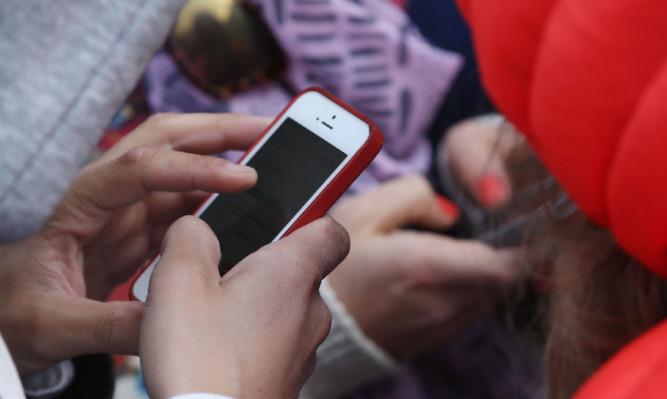Parents are facing the “biggest child protection challenge of this generation” due to instant messaging apps, it has been claimed.
Child protection groups spoke to The Courier about their concerns following a recent court case in which a Tayside man sent 77 electronic messages to his young daughter’s friend, 37 years his junior.
While a sheriff acknowledged “any parent would be concerned” by the “inappropriate” messages which asked “are you fluttering your eyelashes” and enquired about the girl’s sleeping arrangements the Crown was unable to secure a conviction under communications laws.
Evidence contained reams of “emoticons” and “emoji” sent by the man pictorial representations of concepts and emotions which only appear as blank boxes on printouts. The bulk of the messages were sent using WhatsApp an unsecured network that Prime Minister David Cameron last week vowed to ban.
The man who helped draw up the legislation regarding “grooming” the process of ingratiating one’s self into a youngster’s trust with the intention of meeting and engaging in sex acts with them in England and Wales said parents must accept the “very real” problems lurking on mobile devices.
Will Gardner, the chief executive of UK internet safety charity Childnet, said there is “an urgent conversation that has to happen in every home” regarding the use of phone apps.
“When I started Childnet in 2000 our main focus was on chat rooms, which parents just didn’t know anything about and didn’t go on,” he said.
“Now we have Facebook and Twitter where you have parents and children in the same place, and parents have smartphones and apps, and this can be positive.
“But it also means adult problems like oversharing personal information and being bothered online are now children’s problems. There will be services that their children are using that parents aren’t.
“So they need to take some time to ask what services their children are using, who they are talking to and it needn’t be left until they are older.
“We talk to children as young as three or four about the importance of telling someone if you get bothered online.”
During the man’s trial, a fiscal said the exchange would have been normal “between two adults” but the girl’s age put the messages in a different context, leaving the family confused and upset.
The man’s solicitor said his client was guilty of “ill-advised stupidity” but had not meant to cause alarm.
The head of online safety at child protection charity NSPCC believes the use of chat and messaging technology has “grown quicker than our ability to regulate” regarding child safety.
Claire Lilley told The Courier: “Sadly, predators are quick to exploit new technology to take advantage of young people, and keeping children safe online is now the biggest child protection challenge of this generation.
“Alongside tough sanctions for those caught grooming we need to educate our children about staying safe.
“We know that children do take risks online, sometimes without realising it.
“And we know some parents feel confused by the internet out of their depth, and with no control over who their children are talking to and what they share when they socialise online.”
